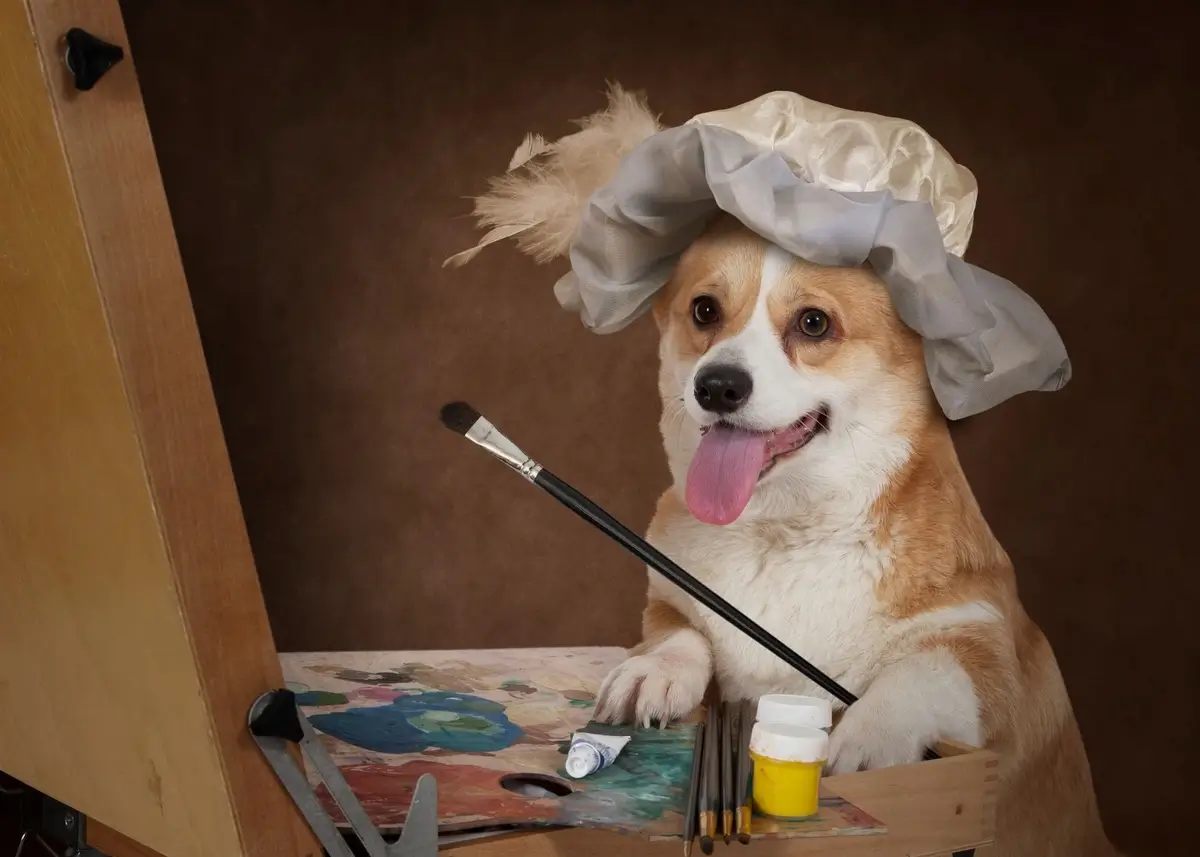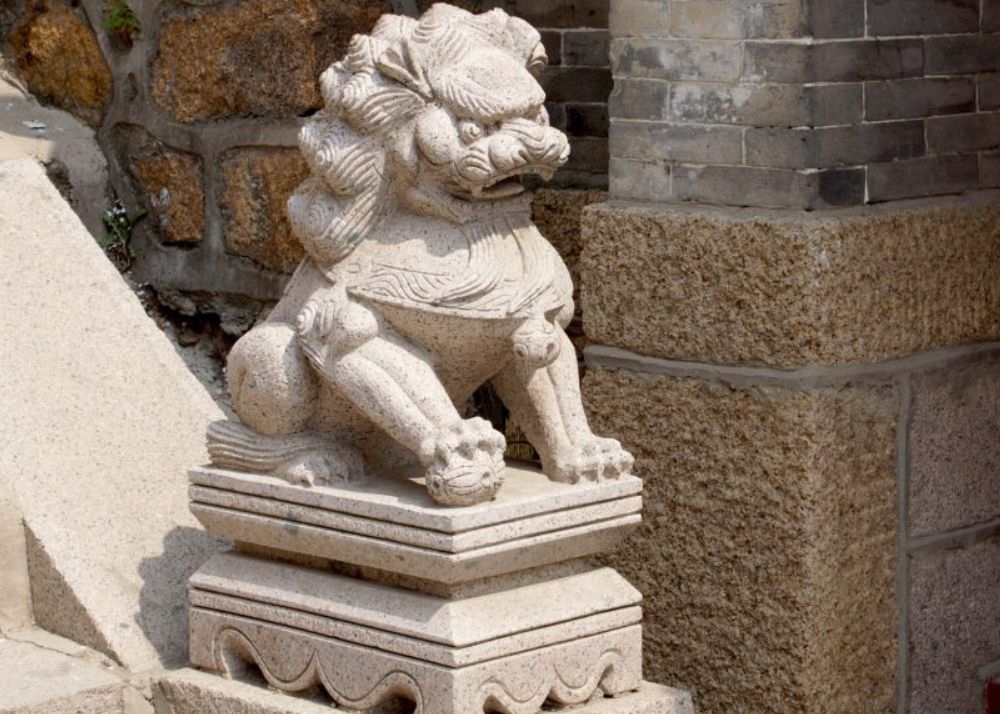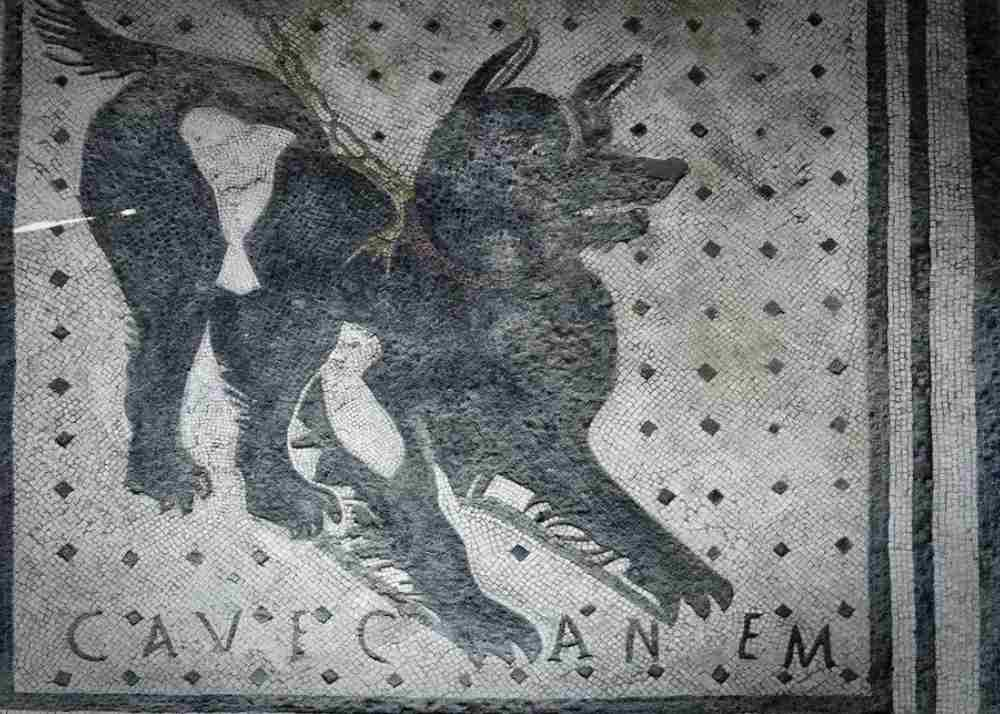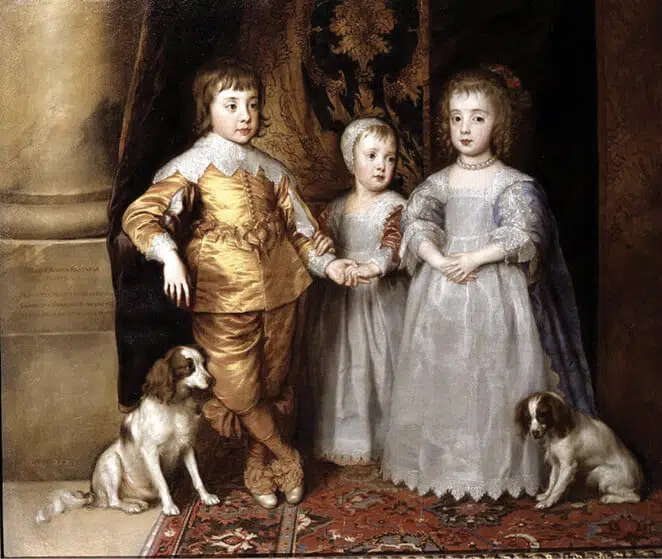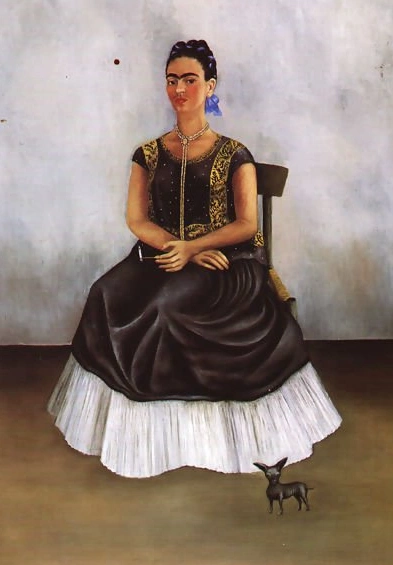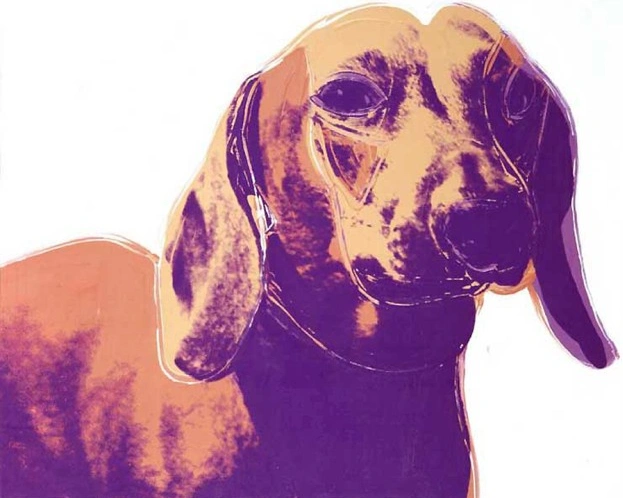An artist creates art as an expression of their imagination and often as a statement to society left for the viewer to interpret. Sometimes we know the inspiration and artist’s intention behind a work, and other times we just go on what we feel the artwork means.
As canines became more of Man’s Best Friend rather than appreciated only for their utilitarian, practical reasons, dogs have been the subject of famous works of art throughout history. Dog-inspired artwork not only features a variety of physical representations of dogs but also abstract interpretations. Some represent dogs as deities or revered cultural significance. Works of art portray aristocrats, nobles, and royalty with beloved court dogs used for companionship or work as hunting dogs, whether it be vermin, stag, fox, badgers, or more. Masterpieces also explore the humanity reflected in dogs and commemorate our society’s love for our furry friends.
Dogs That Have Inspired Well-Known Artwork
You may love making DIY arts and crafts for your dog or trying your hand at some dog art with pet portrait painting workshops, but very few of us will have our canine-inspired art hanging in galleries or talked about centuries later.
Whether for pleasure or work, dogs have formed a bond throughout time with humans. It’s only natural artists want to commemorate and honor their beloved canine companions through their artwork. Here are some famous artwork featuring dogs we’ve curated for your viewing pleasure.
Fu dog, the Chinese guardian lion. Qianshan National Park, Anshan, Liaoning Province, China.
The Pekingese: Ancient Chinese Fu Dogs
Fu Dog, also called interchangeably as Foo Dog, is an ancient Chinese architectural ornament with roots in Indian Buddhist tradition depicting a lion dog, usually in statue form. Male and female Fu Dogs represent yin and yang, the balance of the universe.
Fu Dogs are almost always depictions of the Pekingese dog breed. Pekingnese were thought to be mythical lion dogs that could ward off evil spirits while also representing loyalty and prosperity, as only Chinese royals were at first allowed to own them. These fierce little guard dogs were kept in the large sleeves of royals, earning them the nickname “sleeve dogs.” One could even get the death penalty if they were found to own a Pekingese outside of the royal court, and people were mandated to bow to them as they walked down the street.
These ancient statues of Fu Dogs can still be found guarding imperial palaces, temples, homes, and buildings with their fierce snarls intended to protect people within from negative energies and forces.
"Cave Canem," Pompeii Mosaic, AD 79
"Cave Canem," Pompeii Mosaic, AD 79
A devastating volcanic eruption wiped out the Roman city of Pompeii in AD 79. Volcanic ash preserved casts of humans and animals in their agonizing last moments. Discovered on an archaeological dig, a mosaic found at the House of the Tragic Poet was represented at the entrance to the villa with the words “Cave Canem” spelled out (meaning “beware of the dog” in Latin). The mosaic also features a dog bowed in either a play stance or about to lunge.
Whether you have a vocal-yet-friendly family guard dog or keep a well-trained dog meant for protection and security, many of us in modern times display signs to unwanted intruders stating the same message. Serving as a link between now and then makes this ancient find so relatable to people today.
"Young King Charles II of England with his Spaniel” by Van Dyck, c. 1600s
Cavalier King Charles Spaniels & Portraits of King Charles I and II
Cavalier King Charles Spaniel puppies were initially bred to flush out game, their long ears trapping scents to lead them to the prey. However, Cavalier King Charles Spaniels quickly found favor with the royal court, particularly with King Charles I and II during the 1600s. They went everywhere with the aristocracy and were often seen in packs as they moved from palace to palace.
It’s no wonder that famous portrait artists of the time such as Van Dyck, Rembrandt, and Gainsborough enjoyed painting these dogs alongside their royal and aristocratic subjects. Their feathery coats and sweet expressions brought humanity to the often serious expressions of the time. The breed was unsurprisingly named after these Stuart kings as a tribute to their love for these little companion dogs.
Dogge mit Würsten, “Ave, Caesar, morituri te salutant,” Wilhelm Trübner, 1877
Dogge mit Würsten, “Ave, Caesar, morituri te salutant,” Wilhelm Trübner
Trübner’s “Dog with Sausages” is an example where the name of the artwork goes in conjunction with the art itself to understand the meaning and artist's intention. This painting showcases how artists of the time focused on conveying emotions. Caesar is the name of Trübner’s Great Dane/mastiff and the subject of the painting. Trübner loved giving outrageous historical titles to his contemporary paintings to catch the viewer’s attention in addition to his technique. “Ave, Caesar, morituri te salutant” translates to “Hail, Caesar, the doomed greet you,” which is how gladiators were greeted in the arena before they fought to their death – or victory if they were lucky.
Hermann Goebel was a student of Trübner’s and witnessed a moment during the painting session. He noted:
“The good animal actually sat for him with the sausages as a model. While he was working he had to go to the studio door because someone knocked. When he came back, the dog sat there just like before, immobile and stiff, only the sausages had disappeared without a trace in the short time that had passed.”
Without knowing the story behind these sausages, one may assume it’s a painting of a dog demonstrating stoic determination and patience, traits not practiced in the Coliseum. But when examining the translation of the full title along with the story from Goebel, the sausages became the gladiators themselves, facing certain doom and uniting both Caesars.
George Washington’s American Foxhounds
Not only was George Washington one of the first Founding Fathers of the United States of America, but he was also credited with being the father of the American Foxhound dog breed. While rare today, American Foxhounds were the first exclusively American dog breed.
George Washington loved dogs and owned at least one in each of the modern-day seven AKC dog categories. Washington curated a breeding program of dogs he called Virginia Hounds which were a mix of British hound dogs and local dogs. According to his journals, he hoped to breed “a superior dog, one that had speed, sense, and brains.” While these hard-working dogs were common in colonial times, American Foxhounds are a rare find today.
Artist John Ward Dunsmore (1856-1945) depicted Washington and his pack of American Foxhounds on a foxhunt in his 1909 work entitled “The First Gentleman of Virginia.” Known for his historically accurate and realistic paintings, Dunsmore donated several works of art depicting George Washington’s important moments and everyday happenings, many of which include his various beloved dogs. The painting was restored in the early 2000s and is displayed in the Fraunces Tavern Museum in New York City.
"Itzcuintli Dog With Me” by Frida Kahlo, 1938
Frida Kahlo’s Itzcuintli
Frida Kahlo was a famous Mexican painter known for her glaring self-portraits and depictions of the macabre, including skulls, bleeding hearts, and daggers. Her artwork depicted feelings of pain, loneliness, and isolation. Due to her inability to have children as a result of an accident, Kahlo surrounded herself with various pets for love and companionship. She sometimes represented her pets in her portraits, including her Itzcuintli dog in her 1938 painting entitled "Itzcuintli Dog With Me.”
Commonly referred to now as the Xoloitzcuintli, this ancient Mexican hairless dog breed is one of the rarest dog breeds in the world. Some art historians note how Kahlo seems disinterested and distant from her dog while dressed in dark lonely colors. Xolotl was the god of death to the Aztecs, and some people find significance in this ancient connection to her moods. However, Kahlo took great comfort in her animals and loved them very much, so there is a contrast between what is being portrayed and her reality.
Dachshund (Archie) by Andy Warhol, 1976, synthetic polymer paint and silkscreen ink on canvas
Andy Warhol’s Dachshunds
The Pop Art movement began in Britain in the 1950s where art represented popular modern-day items and people such as consumer products, celebrities, animals, comic strips, and other components of the mass media. Andy Warhol is one of the most famous pop artists, representing Campbell’s soup cans and Marilyn Monroe in bold, bright colors.
Some people do not know about Warhol’s love for Dachshunds. While he grew up always having cats around, he was gifted a short-haired Dachshund he named Archie, and they became inseparable. Warhol arranged his life around Archie, taking him everywhere and refusing opportunities where he would have to leave Archie. Eventually, he got a second Dachshund named Amos to keep Archie company. It’s no wonder he commemorated Archie and Amos’s likeness in several pieces of work.
Emily Taylor
If you want to copy a pop art style yourself and are comfortable working with fabric, check out this quilted pop art collage featuring nine dog breeds such as a Basset Hound, Boston Terrier, and English Bulldog to name a few. Downloadable patterns for the ultimate quilted wall hanging allow you to create a piece to rival famous artists’ depictions of dogs.
"Puppy," Jeff Koonz, 1992
Jeff Koons, Puppy
Jeff Koons is a Neo-Pop artist known for his gigantic sculptures of everyday objects. You may recognize him for a large-scale sculpture of a balloon animal shaped like a dog. In 1992, he designed a massive sculpture of a West Highland White Terrier made of stainless steel, soil, geotextile fabric, an internal irrigation system, and live flowering plants that he called Puppy.
The 43-foot-tall sculpture permanently stands outside the Guggenheim Museum in Bilbao, Spain. The plants and flowers are refreshed twice a year and include begonias, petunias, impatiens, and pansies. When asked what inspired Koons to choose a Westie puppy for his inspiration, he stated, “A West Highland Terrier seems neutral which is good because I don’t want anyone in the audience to feel alienated.” His goal was to make his art accessible to anyone in society to enjoy, and he accomplished just that with a beautiful, larger-than-life sculpture.
Find Your Four-Legged Muse at Pawrade
We could fill several books with dogs represented in works of art. It’s one thing interpreting an abstract representation of a dog and cuddling one in your loving arms.
If you’re searching for a scam-free, no-hassle way of adopting a puppy, you should turn to Pawrade. We partner with trustworthy breeders who we pre-screen to fit our high standards. The way they care for their puppies before they reach your home is truly a work of art.
Consider browsing through Pawrade’s puppies for sale to find your very own muse. We can’t wait to see the artwork inspired by your Pawrade puppy!
